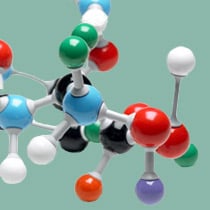
Since their launch in 1901, the Nobel Prizes have rewarded more achievements in the study of carbon-based substances, otherwise known as organic chemistry, than in any other traditional chemistry discipline. Each Nobel Prize in organic chemistry is listed below, grouped loosely according to their fields. Click on each link to see a Speed read, our brief summaries of the breakthroughs for which each Nobel Prize was awarded.
|
|
|
 |
Chemistry of natural productsOne of the core tasks of organic chemistry is to decipher the chemical structures of substances produced by living organisms in order to understand their roles in vital biological processes. Bringing Chemistry to Biology The Birth of Dyeing Essential Chemical Plants Revealing Plant’s Colour Complexity Connecting Vital Functions Establishing Plant’s Blood Relatives The ABC of Vitamins From Bonds to Vitamins Exploring the Sexual Divide |
|
|
|
 |
Methodologies in organic chemistryStitching together molecules to create increasingly complex organic compounds relies on a host of chemical reactions and techniques, which can bring together the correct atoms and molecules and connect them in the correct manner. Creating Carbon Connections Nature’s Assembly Instructions Closing the Circle Rebuilding Chemical Complexity Chemical Construction Tools Supporting Protein Chains Back to the Future A Helping Hand Chemical Exchange Scheme Tools for the Molecular Architect |
|
|
|
 |
Polymer chemistryFrom natural rubber to artificial plastics, understanding how their unusually long molecules are created has allowed these chemicals to be produced on a massive scale. Connecting on a Grand Scale Converting Catalysts |
|
|
|
 |
General organic chemistryThe Nobel Prizes in Chemistry have also recognized breakthroughs that have helped us to understand how the shape of molecules relates to their function, and that have recreated the way in which molecules use shape to recognise and interact with each other in living systems. Chemicals in 3D Vision Getting Chemistry into Shape Connecting Form with Function |
|
|
|
The Speed reads on Nobel Prizes in Organic Chemistry are supported by the Camille and Henry Dreyfus Foundation Special Grant Program in the Chemical Sciences.